|
|
Post by pieter on Jun 24, 2017 3:11:11 GMT -7
Dear friends, This case of the two Dutch journalists is a typical Colombian one, but it has roots in all Spanish parts of Latin-America where there are huge gaps between rich and poor, and Ultra-rightwing regimes, rightwing para military forces and radical left guerilla and terror organisations. Next to that you have the organised counter terror, abductions (hijacking), narcotics (drugs production, transportation and trade) and the notorious drugscartels. Colombia has similar problems and challenges as Mexico, Venezuela, San Salvador, Nicaragua, Honduras, Panama and the former Portuguese colony Brazil. Extreme inequality, oligarchic and authoritarian ruling economical and political elites. Often white elites of Spanish, Portuguese, Italian, German and other European origines formed and form these elites. They are tge Castizo's, the individuals with an admixture of 75% European and 25% Native American heritage. Ruling over poorer indigenous peoples of the Americas (Native Americans or Amerindians), Latino's, Mestizo, Mulatto, Zambo's, blacks and other non whites, these Castizo's still form the ruling classes. Often sharing powers with latino Mestizo politicians ( Nouveau Riche), merchant families, real estate owners, business people and the military class ( army, intelligence agencies and police forces) and the judiciary. Karl will know more about the political, historical, racial, cultural, religious and military, geopolitical, agricultural and economic situation of these nations. There are differences in culture, Spanish national dialects, populations and the power ballance in the various latin American nations (in some nations, the national conservative regimes -close to the business interests of the elites and the military hierarchy- will be supporting the old benefits and interests of the old economical and political rightwing elites in other nations leftwing military or civilian regimes will support the interests of certain socialist parties, unions and the people who support them. Both rightwing and leftwing regimes are often not entirely democratic, because latin America has not excactly a peaceful, democratic and freedom loving heritage. Spanish, Italian and Portuguese fascism, German and Austrian nazism, Spanish and Portuguese colonialism, and Latin American military dictatorships have quite some heritage there. Ofcourse disconnected from the European continent despotism, dictatorship, bloodshed, agression and violence have an authentic Latin-American mark in Southern-America and latin-America. The hertitage of Eloy Alfaro, President of Ecuador from 1895 to 1901; Anastasio Somoza -Nicaragua- (1896-1956), General Augusto Pinochet -Chile- (1915-2006), Jorge Rafael Videla of Argentina. Videla also sheltered many Nazi fugitives along with Juan Perón before him, Alfredo Stroessner of Paraguay and Hugo Banzer of Bolivia. Nex to that you had the rule of one political party in Mexico, the rule of the National Revolutionary Party ( PNR) from 1929 until 2000; the leftwing populist dictatorship of Hugo Chávez in Venezuela and the communist dictatorship in Cuba. Chávez was elected democratically, but acted like a real Southern-American leftwing populist dictator, merging leftwing socialist populism with leftwing militarism. Cuba's Fidel Castro and Che Guevara inspired the three major Columbian Marxist guerrilla movements ELN, FARC– EP and the 19th of April Movement ( M19). The other source of violence and disturbance in Colombia was the Colombian paramilitary and drug trafficking group AUC (The United Self-Defenders of Colombia; in Spanish; Autodefensas Unidas de Colombia). AUC had its roots in the 1980s when militias were established by drug lords to combat rebel kidnappings and extortion. In April 1997 the AUC was formed through a merger, orchestrated by the ACCU, of local right-wing militias, each intending to protect different local economic, social and political interests by fighting left-wing insurgents in their areas. The was an active belligerent in the Colombian armed conflict during the period from 1997 to 2006. The AUC was responsible for attacks against the FARC and ELN rebel groups as well as numerous attacks against civilians beginning in 1997 with the Mapiripán Massacre. The AUC had about 20,000 members and was heavily financed through the drug trade and through support from local landowners, cattle ranchers, mining or petroleum companies and politicians. 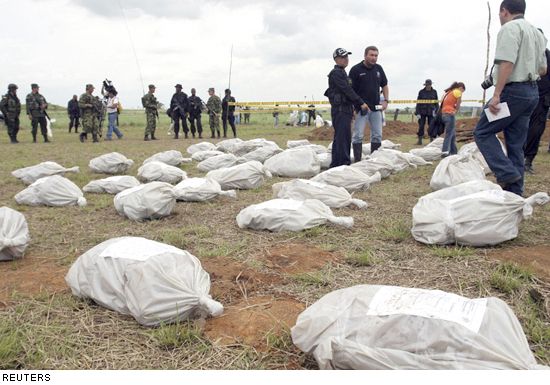 The victims of the Mapiripán Massacreen.wikipedia.org/wiki/Mapirip%C3%A1n_Massacre The victims of the Mapiripán Massacreen.wikipedia.org/wiki/Mapirip%C3%A1n_Massacre The Colombian military has been accused of delegating to AUC paramilitaries the task of murdering peasants and labor union leaders, amongst others suspected of supporting the rebel movements and the AUC publicly and explicitly singled out ' political and trade union operatives of the extreme left' as legitimate targets. The AUC was designated as a terrorist organization by many countries and organizations, including the United States, Canada and the European Union.  AUC paramilitaries on patrol in Colombia somewhere around 2000Military dictatorships in South AmericaArgentina AUC paramilitaries on patrol in Colombia somewhere around 2000Military dictatorships in South AmericaArgentina ( 1930–1932; 1943–1946; 1955–1958; 1966–1973; 1976–1983) Bolivia (1839–1843; 1848; 1857–1861; 1861; 1864–1872; 1876–1879; 1899; 1920–1921; 1930–1931; 1936–1940; 1946–1947; 1951–1952; 1964–1966; 1970–1979; 1980–1982) Brazil ( 1889-1894; 1930; 1964–1985) Chile ( 1924–1925; 1925; 1932; 1973–1990) Colombia (1953–1958) Ecuador (1876–1883; 1935–1938; 1947; 1963–1966; 1972–1979) Paraguay ( 1940–1948; 1954–1989) Peru ( 1842–1844; 1865–1867; 1872; 1879–1881; 1914–1915; 1930–1939; 1948–1956; 1962–1963; 1968–1980) Suriname (1980–1988) Uruguay ( 1865–1868; 1876–1879; 1933–1938; 1973–1985) Venezuela ( 1858–1859; 1859–1861; 1861–1863; 1908–1913; 1922–1929; 1931–1935; 1948–1958) The case of the Colombian ELN rebels and the abducted Dutch journalistswww.bbc.com/news/world-latin-america-40391221Derk Bolt Derk Bolt (born 24 May, 1955) is a Dutch television presenter, editor and producer. He was born in Renkum. After studying journalism (a program which he did not finish) in Utrecht, Bolt started his career at the late night actualities daily radio show Met het Oog op Morgen ( With the eye on tomorrow) and as editor at the Alles is Anders Show ( KRO = Roman-Catholic broadcaster, which attracts a large audience of Roman Catholics, secularists and protestant viewers, due to it's general and honest approach and serious quality television). After that he was, among others, reporter at the actualities television show Brandpunt (English: " Focus"). He is especially known for his work, first as presenter and later as editor and field reporter for long running Dutch television show Spoorloos (the Dutch equivalent of Find My Family), where Bolt and his colleagues reunite people with long lost relatives. He also (co-)presented other shows including Nederland te koop, Gezellig naar de Krim/Gezellig naar Marokko and Brieven boven water. Bolt was also the producer of a number of shows, such as ooggetuige (English: Eye Witness) and Lieve Martine (English: Dear Martine). Bolt was raised Dutch Reformed, is not married and has two children. KidnappingOn 19 June 2017 the Colombian news paper El Tiempo announced that Bolt had been kidnapped together with his colleague Eugenio Follender two days earlier by the left-wing guerrilla organization ELN ( Radical left and Roman-Catholic). This happened in the town El Tarra in the state of Norte de Santander. While this was first denied by the leaders of ELN, it was later confirmed by sources in the organization. A few days later, it was announced that both were released again.  Derk Bolt and Eugenio Follender with ELN-rebels Derk Bolt and Eugenio Follender with ELN-rebels |
|
|
|
Post by pieter on Jun 24, 2017 4:08:52 GMT -7
The last images in Colombia of Derk Bolt and his cameraman Eugenio Follender before they were abducted
Derk Bolt about the dangers of his job in countries abroad for the production of his tv program Spoorloos (Find My Family)
Interviewer: You often search someone with just a paper sign in a Favela and other places like that, that must be dangerous.
Derk Bolt: That happens regulary, I had a gun to my head for instance, I had to hand over my camera, we have often be targets of stone throwers, we often got a lot of attention (as Western camera crew), we have been chased often in an unpleasent manner. In a slum they consider you as part of the authorities the people don't trust, and therefor they see you as the enemy, annoying curious journalists or the police. You have to explain your presence there. You have to make clear what you are doing there. After the fuss with the camera, when I was forced to hand in the camera, and you wonder for a moment is that gun not a replica, shal I do it. After that you are more carefull and prepared when you enter a Favela or a slum.We ask the bad guys of the hood, we explain, we are doing this (helping adoption kids to reconnect to their Southern-American parent or parents they have never seen, after they were transfered to the West as baby infants), we are no Police, we aren't searching for drugs. Is it okay, is it good that we search for the location of the parent, we want to find him, her or them. Our info says that they must be living here somewhere.
Interviewer: It often goes well these searches for the foreign relatives of the people who search for their 'real biological parents', it often goes wrong also.
This is the voice and the essence of Derk Bolt's work
Derk Bolt said in a recent interview that this work had made him a better and more humble man. Connection familymembers, going through difficult situations to find a missing link in someones life, his or her parent and relatives.
Derk Bolt tries to reconnect a Dutch Syrian with his brother in Germany
|
|
|
|
Post by pieter on Jun 24, 2017 6:45:13 GMT -7
|
|
|
|
Post by pieter on Jun 24, 2017 6:56:45 GMT -7
National Liberation Army  The National Liberation Army (Spanish: Ejército de Liberación Nacional, ELN) is a guerrilla army involved in the continuing Colombian armed conflict, which has existed in Colombia since 1964. The ELN advocate a composite communist ideology of Marxism and liberation theology. They conduct military operations throughout the national territory of Colombia; in 2013, it was estimated that the ELN forces consisted of between 1,380 and 3,000 guerrillas. The ELN is the lesser known of two communist guerrilla armies who operate in Colombia; the other guerrilla army is the Revolutionary Armed Forces of Colombia ( FARC–EP) who are Marxist–Leninist in their approach to the national liberation of Colombia. According to former ELN national directorate member Felipe Torres, one fifth of ELN supporters have taken up arms. The ELN has been classified as a terrorist organization by the governments of Colombia, Peru, United States, Canada and the European Union.  Fabio Vásquez Castaño was a Colombian rebel and revolutionary who was trained by Fidel Castro regime during the 1960s. He was one of the original founders of the Colombian guerrilla group ELN. The ELN movement began in 1964 when a group of students, inspired by Che Guevara and led by Fabio Vásquez, returned from their training in Cuba. Following the death of Vásquez, the ELN was led by a series of priests until the emergence of its present leader, Antonio García. Fabio Vásquez Castaño was a Colombian rebel and revolutionary who was trained by Fidel Castro regime during the 1960s. He was one of the original founders of the Colombian guerrilla group ELN. The ELN movement began in 1964 when a group of students, inspired by Che Guevara and led by Fabio Vásquez, returned from their training in Cuba. Following the death of Vásquez, the ELN was led by a series of priests until the emergence of its present leader, Antonio García.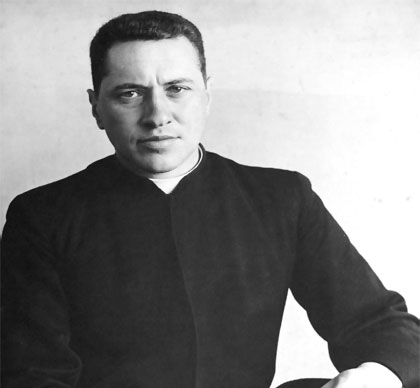 Camilo Torres Restrepo (3 February 1929 in Bogotá, Colombia – 15 February 1966 in Santander) was a Colombian socialist, Roman Catholic priest, a predecessor of liberation theology and a member of the National Liberation Army (ELN) guerrilla organisation. During his life, he tried to reconcile revolutionary Marxism and Catholicism.Camilo Torres Restrepo Camilo Torres Restrepo (3 February 1929 in Bogotá, Colombia – 15 February 1966 in Santander) was a Colombian socialist, Roman Catholic priest, a predecessor of liberation theology and a member of the National Liberation Army (ELN) guerrilla organisation. During his life, he tried to reconcile revolutionary Marxism and Catholicism.Camilo Torres Restrepo (1929–66), a well-known university professor ( egalitarian and Marxist) was openly critical of the grossly unequal distribution of income among the social classes of Colombia. His attraction to the radical ideas of Liberation Theology led him to join the ELN, a guerrilla army intent upon effecting the revolutionary praxis of liberation theology among the poor people of Colombia. Father Camilo was killed in his first combat as an ELN guerrilla, and so became the exemplar ELN soldier, to be emulated by ELN guerrillas and by other liberation-theology priests from the lower ranks of the Roman Catholic priesthood. In the 1970s, after suffering military defeat and internal crises, the ELN was commanded by the Spanish priest Father Manuel Pérez Martínez (1943–98) alias El Cura Pérez ( The Priest Pérez), who shared joint-leadership with leader Nicolás Rodríguez Bautista, alias " Gabino". From the late 1970s, The Priest Pérez presided over the National Liberation Army as one of its most recognized figures, until he died of hepatitis B in 1998. Father Manuel Pérez was instrumental to establishing the ideology of the ELN, a composite of Cuban revolutionary theory and liberation theology that proposes the establishment in Colombia of a Christian and communist regime to resolve the socioeconomic problems of chronic political corruption, poverty and the political exclusion of most Colombians from the government of their country.  Father Manuel Pérez Martínez Father Manuel Pérez Martínez ELN leader Nicolás Rodríguez BautistaMarxist insurgency in Colombia ELN leader Nicolás Rodríguez BautistaMarxist insurgency in Colombia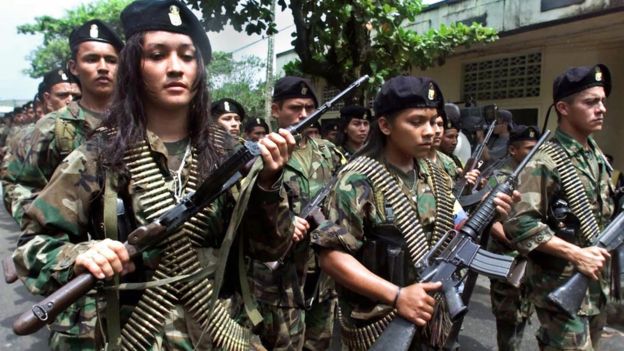 Marxist guerrilla Marxist guerrilla groups began appearing in Colombia during the presidency of Guillermo León Valencia, a Conservative. The first was the National Liberation Army (Ejército de Liberación Nacional; ELN), which was created by a group of Colombian students who had studied in Cuba. Founded in 1964, the ELN followed strategies espoused by Che Guevara. Another guerrilla group, which followed two years later, was the Colombian Revolutionary Armed Forces (Fuerzas Armadas Revolucionarias de Colombia; FARC), which was more connected to Soviet-influenced communist movements. Much of FARC originated in the “resistance committees” that had appeared in Colombia during La Violencia.  Guillermo León Valencia Muñoz (27 April 1909 – 4 November 1971) was the 21st President of Colombia from 1962 to 1966. Guillermo León Valencia Muñoz (27 April 1909 – 4 November 1971) was the 21st President of Colombia from 1962 to 1966.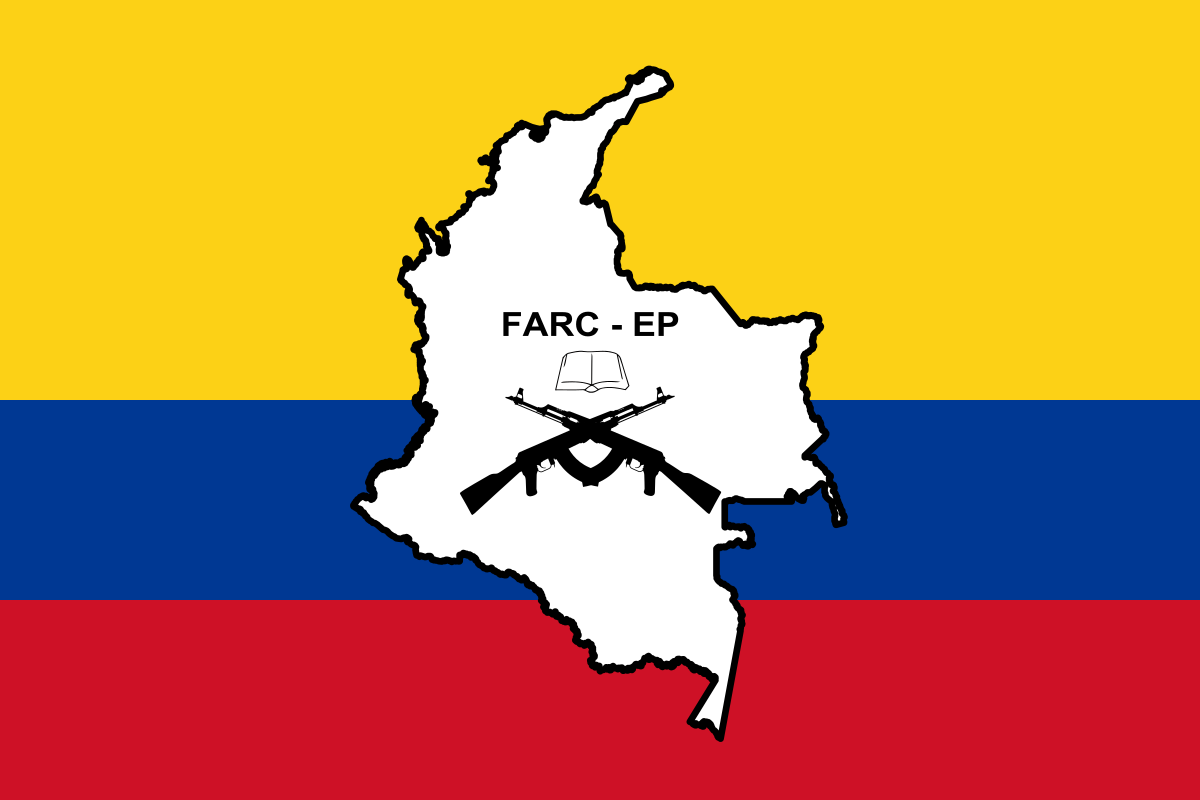 Carlos Lleras Restrepo Carlos Lleras Restrepo was the third National Front president (1966–70). He returned the economy to a sound footing, improved government planning for economic development, and pushed through political reforms essential to an orderly end to the National Front (which seemed increasingly to constitute a monopoly of power by the Conservative-Liberal oligarchy). Although the constitutional reform of 1968 stipulated that elections would become competitive again after 1974, the president was still required to give “ adequate and equitable” representation to the second largest political party in his cabinet and in the filling of other bureaucratic posts.  Carlos Alberto Lleras Restrepo (12 April 1908 – 27 September 1994) was the 22nd President of Colombia from 1966 to 1970. Carlos Alberto Lleras Restrepo (12 April 1908 – 27 September 1994) was the 22nd President of Colombia from 1966 to 1970.Also during the Lleras years, some semiautonomous government corporations expanded their services to the private sector: the capital and reserves of the Institute of Industrial Development, for example, were increased from 6.6 million pesos in 1967 to some 77 million pesos in 1969. Colombia achieved its best rate of economic growth near the end of the Lleras administration, when the real gross domestic product increased by some 7 percent. These successes were in part due to high coffee prices, but effective government policy was of undeniable importance. In the 1970 presidential election Misael Pastrana Borrero, the Conservative candidate backed by the National Front, nearly lost to former dictator Gustavo Rojas Pinilla as the urban vote went strongly against the Front. (For the first time Colombia’s population was more than 50 percent urban.) A rapid migration from country to city had created new urban interest groups—particularly in the lower middle and working classes—that felt unrepresented by the traditional parties; nonetheless, the traditional parties prevailed and were not again successfully challenged. Unhappiness with the 1970 election gave rise in 1973–74 to another guerrilla group, the 19th of April Movement ( Movimiento 19 de Abril, or M-19), named for the date that the group asserted the election was “ stolen” from Pinilla. The M-19 launched itself to national attention when its members stole a sword that had belonged to Simón Bolívar. The group tended to rely on audacious militant actions, such as the kidnapping and murder of a labour leader in 1976, tunneling into a Bogotá arsenal and stealing arms in 1979, and kidnapping the guests attending a cocktail party at the embassy of the Dominican Republic in Bogotá in 1980.   
|
|
|
|
Post by pieter on Jun 24, 2017 7:59:53 GMT -7
Liberation theology Liberation theology, religious movement arising in late 20th-century Roman Catholicism and centred in Latin America. It sought to apply religious faith by aiding the poor and oppressed through involvement in political and civic affairs. It stressed both heightened awareness of the “sinful” socioeconomic structures that caused social inequities and active participation in changing those structures. 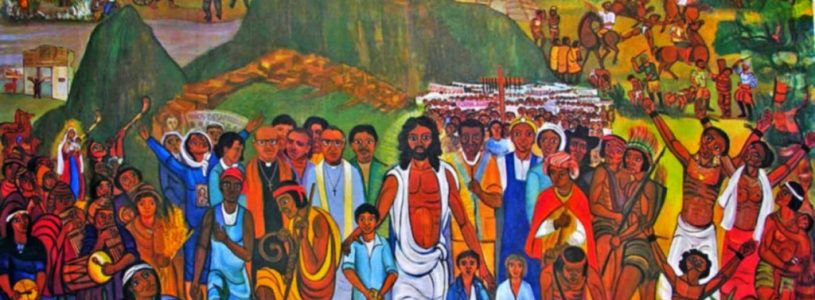 Liberation theologians believed that God speaks particularly through the poor and that the Bible can be understood only when seen from the perspective of the poor. They perceived that the Roman Catholic Church in Latin America was fundamentally different from the church in Europe—i.e., that the church in Latin America should be actively engaged in improving the lives of the poor. In order to build this church, they established communidades de base, (“base communities”), which were local Christian groups, composed of 10 to 30 members each, that both studied the Bible and attempted to meet their parishioners’ immediate needs for food, water, sewage disposal, and electricity. A great number of base communities, led mostly by laypersons, sprang into being throughout Latin America. 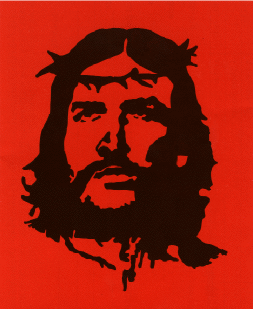 Che Guevara portrayed as Christ Che Guevara portrayed as ChristThe birth of the liberation theology movement is usually dated to the second Latin American Bishops’ Conference, which was held in Medellín, Colombia, in 1968. At this conference the attending bishops issued a document affirming the rights of the poor and asserting that industrialized nations enriched themselves at the expense of developing countries. The movement’s seminal text, Teología de la liberación (1971; A Theology of Liberation), was written by Gustavo Gutiérrez, a Peruvian priest and theologian. Other leaders of the movement included the Belgian-born Brazilian priest José Comblin, Archbishop Oscar Arnulfo Romero of El Salvador, Brazilian theologian Leonardo Boff, Jesuit scholar Jon Sobrino, and Archbishop Helder Câmara of Brazil.  The movement’s seminal text, Teología de la liberación (1971; A Theology of Liberation), was written by Gustavo Gutiérrez, a Peruvian priest and theologian. Gustavo Gutiérrez, (born June 8, 1928, Lima, Peru), Roman Catholic theologian and Dominican priest who is considered the father of liberation theology, which emphasizes a Christian duty to aid the poor and oppressed through involvement in civic and political affairs. The movement’s seminal text, Teología de la liberación (1971; A Theology of Liberation), was written by Gustavo Gutiérrez, a Peruvian priest and theologian. Gustavo Gutiérrez, (born June 8, 1928, Lima, Peru), Roman Catholic theologian and Dominican priest who is considered the father of liberation theology, which emphasizes a Christian duty to aid the poor and oppressed through involvement in civic and political affairs.The liberation theology movement gained strength in Latin America during the 1970s. Because of their insistence that ministry should include involvement in the political struggle of the poor against wealthy elites, liberation theologians were often criticized—both formally, from within the Roman Catholic Church, and informally—as naive purveyors of Marxism and advocates of leftist social activism. By the 1990s the Vatican, under Pope John Paul II, had begun to curb the movement’s influence through the appointment of conservative prelates in Brazil and elsewhere in Latin America.  Pope John Paul II was a strong oponent of Liberation theology, in this image John Paul wagges his finger in the face of the leftist Sandinist Nicaraguan priest Ernesto Cardenal telling him, "You must straighten out your position with the church." Pope John Paul II was a strong oponent of Liberation theology, in this image John Paul wagges his finger in the face of the leftist Sandinist Nicaraguan priest Ernesto Cardenal telling him, "You must straighten out your position with the church."In 1984 and 1986, through Cardinal Ratzinger (future Pope Benedict XVI) as Prefect of the Congregation for the Doctrine of the Faith, John Paul II officially condemned aspects of liberation theology, which had many followers in South America. Visiting Europe, Óscar Romero unsuccessfully attempted to obtain a Vatican condemnation of El Salvador's regime, for violations of human rights and its support of death squads. In his travel to Managua, Nicaragua, in 1983, John Paul II harshly condemned what he dubbed the "popular Church" (i.e. "ecclesial base communities" supported by the CELAM), and the Nicaraguan clergy's tendencies to support the leftist Sandinistas, reminding the clergy of their duties of obedience to the Holy See. During that visit Ernesto Cardenal, a priest and minister in the Sandinista government, knelt to kiss his hand. John Paul withdrew it, wagged his finger in Cardenal's face, and told him, "You must straighten out your position with the church." 
|
|
|
|
Post by pieter on Jun 24, 2017 8:09:53 GMT -7
Óscar Arnulfo Romero y Galdámez Blessed Óscar Romero Blessed Óscar Romero, in full Óscar Arnulfo Romero y Galdámez (born August 15, 1917, Ciudad Barrios, El Salvador—died March 24, 1980, San Salvador; beatified May 23, 2015), Salvadoran Roman Catholic archbishop who was a vocal critic of the violent activities of government armed forces, right-wing groups, and leftist guerrillas involved in El Salvador’s civil conflict.  Although Romero had been considered a conservative before his appointment as archbishop in 1977, he denounced the regime of dictator Gen. Carlos Humberto Romero (no relation). The archbishop also refused to support the right-wing military-civilian junta that replaced the deposed dictator. Further, his outspoken defense of the poor—who were powerless victims of widespread violence— brought repeated threats to his life. In the face of those threats, Romero declared his readiness to sacrifice his life for the “ redemption and resurrection” of El Salvador. His unreserved advocacy for human rights made him a hero to many, and he was nominated for the 1979 Nobel Prize for Peace by a number of U.S. congressmen and 118 members of the British Parliament. The following year Romero was assassinated at the hands of an unknown assailant while saying mass.  Romero’s focus on the church’s “ preferential option for the poor” principle and his call for an end to their oppression by the regime led some Latin American Catholic theologians who were associated with the liberation theology movement to view him favourably. It is unclear, however, how closely Romero associated with the movement, which integrated Marxist philosophy with Catholic social ethics and emphasized the struggle of the poor for justice. In 2015, 35 years after Romero’s death, Pope Francis I declared him a martyr. Romero was beatified later that year. 
|
|
|
|
Post by Jaga on Jun 24, 2017 10:13:48 GMT -7
Pieter, liberation theology was something I always tried to understand. I had generally very positive feelings towards it. But I know there are lots of opponents and our Polish pope was considered not always friendly towards it, since it reminded him communism too much
|
|
|
|
Post by pieter on Jun 24, 2017 11:33:36 GMT -7
Liberation Theology was in my opinion a reaction on the injustice, inequality, colonial heritage, the extreme gap between the poor have nots and the rich have it all. Southern-America and Central America have a bloody history with the human sacrifice in the Aztec culture and mythology (religion), the bloodletting ceremonies and human sacrifice of the Maya's, the Inca's freezing of children to serve the Gods in their religion and after these rather strange Native Indian cultures, religions and societies the devastating influence of the invading Conquistadors (the soldiers and explorers of the Spanish Empire or the Portuguese Empire) destroyed these Native American civilizations and Native American peoples, communities and societies. The Polish Pope opposed the Liberation Theology due to it's Marxist elements, because he experienced himself the wrongdoings of Marxism-Leninism in the Polish Peoples republic with it's anti-Roman-Catholic traits and anti-christian atheism in general. Liberation Theology differed however with Sovjet Marxism and the Communism of the European communist political parties and unions. Liberation Theology merged Roman-Catholic social teachings, the christian emphasis on care for the pour and empathy with the weak and the ill with certain social socialists elements in Marxism. Liberation Theology sought to apply religious faith by aiding the poor and oppressed through involvement in political and civic affairs. It stressed both heightened awareness of the “ sinful” socioeconomic structures that caused social inequities and active participation in changing those structures. Liberation theologians believed that God speaks particularly through the poor and that the Bible can be understood only when seen from the perspective of the poor. They perceived that the Roman Catholic Church in Latin America was fundamentally different from the church in Europe—i.e., that the church in Latin America should be actively engaged in improving the lives of the poor. In order to build this church, they established communidades de base, (“ base communities”), which were local Christian groups, composed of 10 to 30 members each, that both studied the Bible and attempted to meet their parishioners’ immediate needs for food, water, sewage disposal, and electricity. A great number of base communities, led mostly by laypersons, sprang into being throughout Latin America. The birth of the liberation theology movement is usually dated to the second Latin American Bishops’ Conference, which was held in Medellín, Colombia, in 1968. At this conference the attending bishops issued a document affirming the rights of the poor and asserting that industrialized nations enriched themselves at the expense of developing countries. The movement’s seminal text, Teología de la liberación (1971; A Theology of Liberation), was written by Gustavo Gutiérrez, a Peruvian priest and theologian. Other leaders of the movement included the Belgian-born Brazilian priest José Comblin, Archbishop Oscar Arnulfo Romero of El Salvador, Brazilian theologian Leonardo Boff, Jesuit scholar Jon Sobrino, and Archbishop Helder Câmara of Brazil. The liberation theology movement gained strength in Latin America during the 1970s. Because of their insistence that ministry should include involvement in the political struggle of the poor against wealthy elites, liberation theologians were often criticized—both formally, from within the Roman Catholic Church, and informally— as naive purveyors of Marxism and advocates of leftist social activism. By the 1990s the Vatican, under Pope John Paul II, had begun to curb the movement’s influence through the appointment of conservative prelates in Brazil and elsewhere in Latin America.   War, civil wars, occupation of native Indian lands by alien Southern-Europeans of the Iberian Peninisula. Like the tiny Netherlands the Portuguese also had a huge colonial empire and competed with the Dutch, Spanish, British and probably French. You have been in Brazil. That was Portuguese territory. A lot of problems in Southern-America and Central-America have cultural, racial, social-economical, financial and ethnic backgrounds. The inequality between the European Castizo's and Mestizo Latin elites on one side and the poor native Americans (Amerindians), Blacks, Mulatto, Zambo's and poorer whites on the other side. The Latin American society is a complicated one. In many parts of Latin America being white is more a matter of socio-economic status than specific phenotypic traits, and it is often said that in Latin America "money whitens" Within Latin America there are variations in how racial boundaries have been defined. In Argentina, for example, the notion of mixture has been downplayed, resulting in the country having no real mestizo group. Alternately, in countries like Mexico and Brazil mixture has been emphasized as fundamental for nation-building, resulting in a large group of bi-racial mestizos, in Mexico, or tri-racial pardos, in Brazil, who are considered neither fully white nor fully non-white. People of European origin began to arrive in the Americas in the 15th century. After the Wars of Independence, the elites of most of the countries of the region concluded that their underdevelopment was caused by their populations being mostly Amerindian, Mestizo or Mulatto; so a major process of "whitening" was required, or at least desirable. Most Latin American countries then implemented blanqueamiento policies to promote European immigration, and some were quite successful, especially Argentina, Uruguay, and Brazil. From the late 19th century to the early 20th century, the number of European immigrants who arrived far surpassed the number of original colonists. Between 1821 and 1932, of a total 15 million immigrants who arrived in Latin America, Argentina received 6.4 million, and Brazil 5.5 million. White Latin Americans in ColombiaThe proportion of the Colombian population with primarily European ancestry is estimated at approximately 20%, but in the 2005 Census, 37% of the total population self-identified as white.[5] According to genetic research by the University of Brasilia, Colombian genetic admixture indicates 45.9% European, 33.8% Amerindian, and 20.3% African ancestry. Within 100 years after the first Spanish settlement, nearly 95 percent of all Native Americans in Colombia had died. The majority of the deaths of Native Americans were the cause of diseases such as measles and smallpox, which were spread by European settlers. Many Native Americans were also killed by armed conflicts with European settlers. White Colombians are mostly descendants of Spaniards, although Italian, German, Irish, Portuguese, and Lebanese Colombians are found in significant numbers. Many Spanish colonists came searching for gold, while other Spaniards established themselves as leaders of social organizations teaching natives the Christian faith and the ways of European civilization. Catholic priests provided education for Native Americans that otherwise was unavailable. Between 1540 and 1559, 8.9 percent of the residents of Colombia were of Basque origin. It has been suggested that the present day incidence of business entrepreneurship in the region of Antioquia is attributable to the Basque immigration and character traits. Today many Colombians of the Department of Antioquia region preserve their Basque ethnic heritage. In Bogota, there is a small district/colonies of Basque families who emigrated as a consequence of Spain's Civil War or because of better opportunities. Basque priests were the ones that introduced handball into Colombia. Basque immigrants in Colombia were devoted to teaching and public administration. In the first years of the Andean Multinational Company, Basque sailors navigated as captains and pilots on the majority of the ships until the country was able to train its own crews. The first and largest wave of immigration from the Middle East began around 1880, and continued during the first two decades of the twentieth century. The immigrants were mainly Maronite Christians from Greater Syria (Syria and Lebanon) and Palestine, fleeing those then Ottoman territories. Syrians, Palestinians, and Lebanese have continued to settle in Colombia. The 2005 census reported that the “nonethnic population,” consisting of whites and mestizos (those of mixed white European and Amerindian ancestry, including almost all of the urban business and political elite), constituted 86 percent of the national population. The 86 percent figure is subdivided into 49 percent mestizo and 37 percent white. The census figures show how Colombians see themselves in terms of race.
— Colombia: A Country Study, Colombia: A Country Study; pp. 86-87
|
|




































